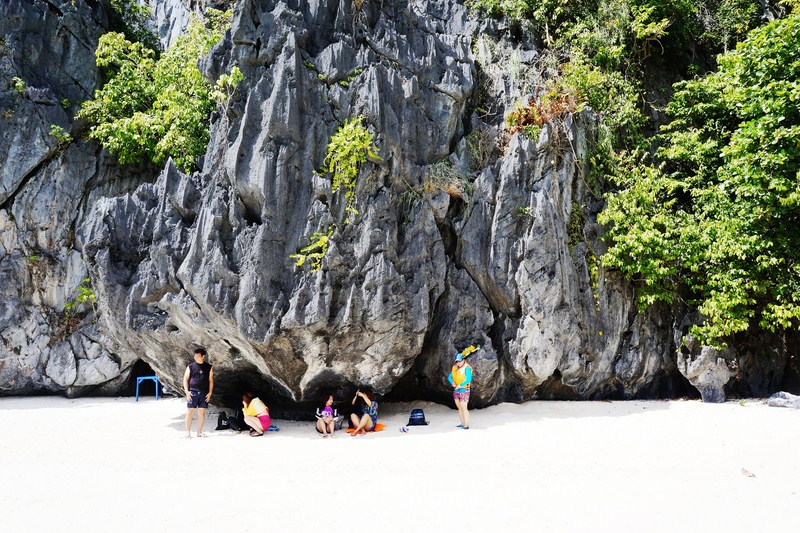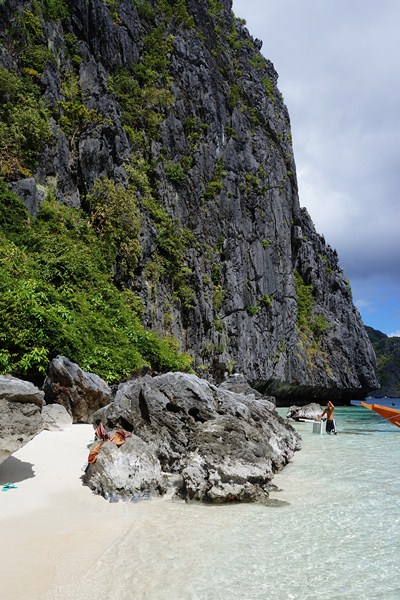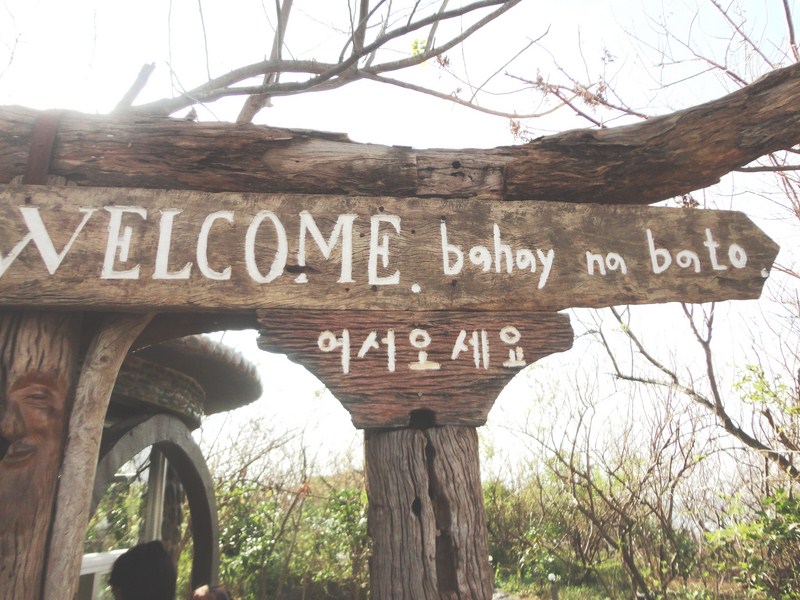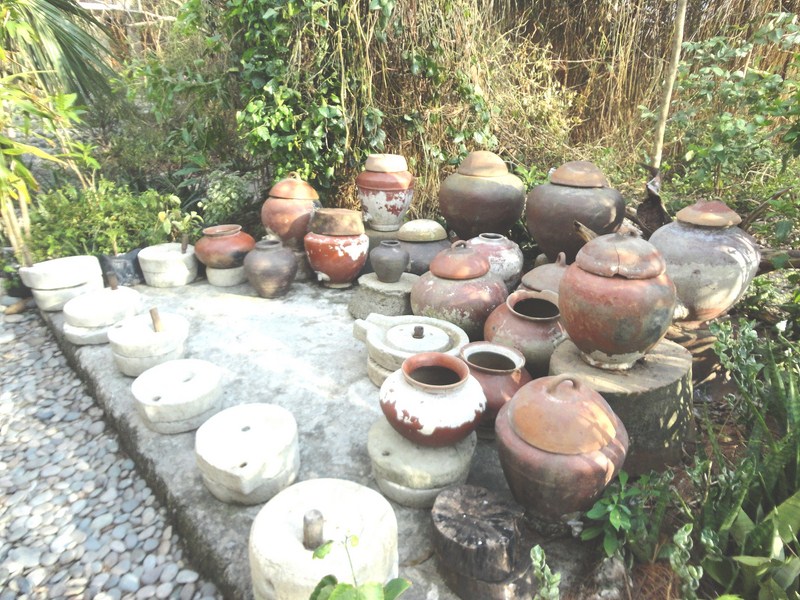After lunch at Star Beach, we again boarded our motorized outrigger boat for Secret Lagoon, a part of Island Tour A. As it was low tide, our boat docked some distance from the shore of a white sand beach lined with coconut palms beneath a massive and towering limestone cliff face. Alighting our boat, we had the choice of carefully wading on top of sharp rocks (aqua shoes highly recommended) or be pulled by our guides while floating on a life jacket. Most chose the latter while I did the former.
We came ashore a very beautiful beach, with huge alien-like limestone formations surrounding it, offering you majestic views of the open water between the cliffs and a peek of Shimizu Island. To the left of the beach is a huge cliff with a small opening. That, my friends, was the entrance to the Secret Lagoon, also known as Hidden Lagoon of Miniloc Island.
During high tide, it might be impossible to access the Secret Lagoon as, due to safety reasons, tourists might bump their heads on the sharp rocks of the tiny opening while swimming through it.
Fortunately, since it was low tide, the opening was now above the water so we didn’t have to swim through it. We just had to carefully crawl in or twist our body, like a pretzel, into the Secret Lagoon, making it the trickiest attraction of the day to get into. The water leading to the lagoon was shallow, so we were extra careful with the sharp rocks and corals to avoid scrapes and wounds.
Once through, we were mesmerized by the majestic limestone rock formations and cliffs surrounding it, its shadows making the temperature inside much cooler. As it was low tide, swimming was not enticing since the stagnant water was quite murky. The water inside looked shallow, but it gets deeper as you go farther so we didn’t dare. As it’s quite small, there’s not much to inside. For the adventurous, there’s a small passageway meters deep into the water where one can deep dive into.
However, we just posed beneath the massive, quite photogenic cliffs then left as there were lots of tourists waiting in the wings. It’s hard to consider the lagoon a secret with dozens of other tourists milling around you. To avoid the crowds, pay a bit extra and go later in the day. However, its adjacent, quieter white sand beach is one great spot for swimming and snorkeling.





















































































































